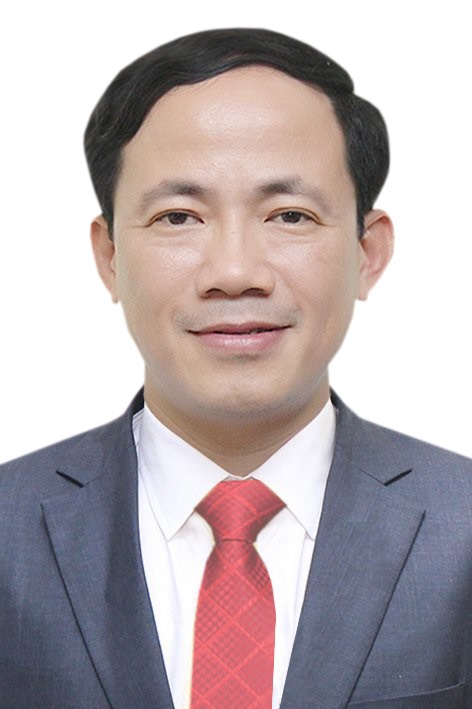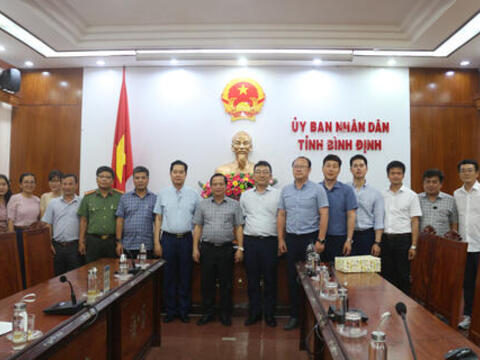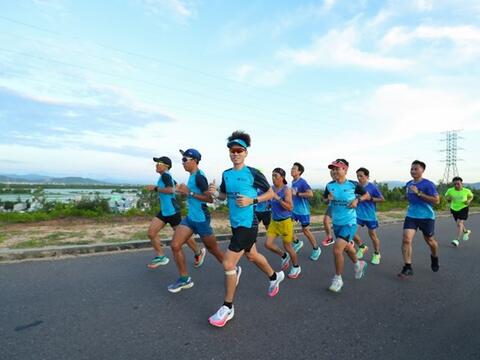Up to now, through archaeological excavations, it has been determined that over 2000 years ago on the land of Binh Dinh today, there were inhabitants of Sa Huynh culture. From the beginning of the Common Era (192) on the central strip of Vietnam, an ancient state was formed, the Champa State. The state of Champa was built on a very brilliant cultural foundation, it inherited the achievements of the previous Sa Huynh culture, and at the same time absorbed the influence of Indian, Chinese and many other cultures elements of other cultures in the region. The Champa state with its origins in 192 ended its own historical role in the second half of the seventeenth century, ending its glorious existence during the 16 centuries.
Binh Dinh is the central land of Central Vietnam with nearly 5 centuries holding the central role of the Champa state, although there are many ups and downs, wars occur continuously, but Champa culture here still developed until the Champa state lost its historical role. Cultural vestiges of the period when the Champa state existed on Binh Dinh land are still extremely rich, diverse in type and quantity, and have become an important object in further research and archeology to Binh Dinh.
In July 1471, King Le established Hoai Nhon government with 3 districts: Bong Son, Phu Ly and Tuy Vien. Since then, the Vietnamese began to live in present-day Binh Dinh. In 1490 (less than 20 years later), according to Thien Nam Du Ha Tap, under Hong Duc, Phu Hoai Nhon had 19 cantons and 100 communes.
In 1570, Nguyen Hoang, who was appointed by King Le to take office in Thuan Hoa and Quang Nam at that time, had Hoai Nhon government.
In 1602, Lord Nguyen Hoang changed Hoai Nhon government to Quy Nhon.
In 1651, under Nguyen Phuc Tan, the Lord changed Hoai Nhon government to Quy Ninh. In 1702, Lord Nguyen Phuc Khoat restored the old name to Quy Nhon and was still called during the Tay Son period. In 1744, Lord Nguyen Phuc Khoat set the religion as the palace, but the government level remained the same. Quy Nhon Palace still belonged to Quang Nam Palace, and placed the positions of governors and courtiers to rule. The capital was moved to the north of Do Ban citadel, located in Chau Thanh village (now in Nhon Thanh commune, An Nhon).
Since the Nguyen Lords, in Dang Trong in general and Binh Dinh in particular, there has been a gap between rich and poor, different positions and classes in society. Especially at the beginning of the seventeenth century, the above issue became even more profoundly contradictory. Before the Tay Son peasant uprising in 1771, there were many peasant uprisings in Binh Dinh, in which the uprising of Chang Lia was typical: robbing the rich, giving to the poor, punishing officials repressively oppressing people. But it didn't last long, Lia's uprising was defeated.
In 1773, the peasant uprising of the three Tay Son brothers, led by Nguyen Nhac, developed down to the Tay Son lowlands, occupying the land of Kien Thanh (now Kien My) where the Tay Son leaders were born. , Nguyen Nhac claimed to be the first farm owner to govern two districts, Phu Ly and Bong Son. In the same year (1773), Tay Son insurgents continued to invade Quy Nhon citadel.
In March 1776, Nguyen Nhac repaired and built more Do Ban citadel, then renamed it Emperor, proclaimed himself King of Tay Son, cast a golden seal, appointed Nguyen Lu as Thieu Deputy, Nguyen Hue as Chief Assistant, other generals were ordained to match a newly established central government. In 1793, after King Quang Trung died, Nguyen Anh led his army to attack Emperor Citadel. Nguyen Nhac was sick and sent his son Nguyen Bao to lead the resistance, Nguyen Bao's army was defeated and fled. King Quang Toan sent Thai lieutenant Pham Cong Hung, guardian Nguyen Van Huan, Grand Duke Le Trung, Grand Duke Ngo Van So and marine general Dang Van Chan from Phu Xuan to rescue and attack Nguyen Anh's army. Nguyen Anh's army lost and ran away. Quan Quang Toan entered the citadel, Nguyen Nhac brought gold and silver to the army. Pham Cong Hung and the generals ordered the confiscation of treasures and armory of the warehouses and then occupied the citadel. Nguyen Nhac indignantly vomited blood and died.
From 1793 to 1799, the Emperor citadel was changed to Quy Nhon palace under the Canh Thinh dynasty, which was also the weakening step of Tay Son.
From 1799 to 1802, Quy Nhon citadel was occupied by Nguyen Anh's army and changed to Binh Dinh and throughout history, this was the center of Nguyen dynasty's rule in Binh Dinh in the early years of the 19th century.
By 1885, Binh Dinh was a large province in Central Vietnam, many lands of Gia Lai and Kon Tum also belonged to Binh Dinh.
In 1890, the French colonialists merged Phu Yen into Binh Dinh into Binh Phu province, the capital of which was Quy Nhon. But in 1899, Phu Yen separated from Binh Phu, Binh Dinh became an independent province again.
In 1907, the Governor General of Indochina again issued a decree abolishing Pleiku De province. Half of the land of this province was merged back into Binh Dinh province.
In 1913, the French colonialists merged Phu Yen into Binh Dinh province to form Binh Phu province.
In 1921, the French colonialists separated Phu Yen province, re-established Binh Dinh province and lasted until 1945.
Along with the August revolution, landslides, on September 3, 1945, after the uprising to gain power, the new provisional revolutionary People's Committee of the province took the name of Binh Dinh province as Tang Bat Ho province. However, Tang Bat Ho province instead of Binh Dinh province has not been recognized by the Central Government, on the official documents of the Democratic Republic of Vietnam state, Binh Dinh province remains unchanged, so Tang Bat Ho province does not exist for long.
During the nine-year resistance war against the French colonialists (1945 - 1954), Binh Dinh was a completely free province, the direct strategic rear of the battlefields of Zone V, Central Highlands, Southern Laos and Northeast Cambodia. Nine years of arduous and heroic resistance, the people of Binh Dinh, under the leadership of the Communist Party of Vietnam, contributed and joined the whole country in defeating the French invaders, forcing them to sign the Geneva Accords respect independence, sovereignty, unity and territorial integrity of the Vietnamese people.
However, in the spirit of this Agreement, our country was temporarily divided into two regions: the North was liberated to advance towards building socialism, the South from the 17th parallel onwards, including Binh Dinh province still under the yoke of imperial henchmen, waiting for the general election to unify the country.
While the Genève Agreement (1954) on Indochina had been signed with ink has not dried yet, the US Empire ousted France and jumped into the South to set up a henchman government of Ngo Dinh Diem to turn South Vietnam into a new American colony.
Ngo Dinh Diem's government divided South Vietnam into two regions: from Binh Thuan onwards, it was called Southern part; From Binh Thuan to the 17th parallel, it is called the Central part. The central part is divided into two areas, called the Central Highlands and the Highlands. Binh Dinh province belongs to the Central Highlands Central part and still remains a provincial-level administrative unit as before until the day the South was completely liberated (April 30, 1975).
During 20 years (1954 - 1975), following the call of President Ho Chi Minh and the Party Central Committee on the struggle to liberate the South and reunify the Fatherland, Binh Dinh province's army and people have overcome countless difficulties, arduously, fought bravely, tenaciously, clinging to the ground, clinging to the people, contributing together with the whole country to completely defeat the invading American imperialists, liberating their beloved homeland on March 31, 1975.
From the end of 1975 to 1989, Binh Dinh province merged with Quang Ngai province to take the name Nghia Binh province. During 15 years of unifying the people of Binh Dinh and the people of Quang Ngai, they made every effort to overcome the consequences of the war, carry out socio-economic rehabilitation and development; maintain national defense and security, constantly improve the people's material and spiritual life.
Since 1989, Binh Dinh province was re-established from Nghia Binh province. Since then, under the leadership of the Provincial Party Committee, promoting the tradition of patriotism and revolution, the people of Binh Dinh have made every effort to build their homeland to become richer and more beautiful, with many innovations in thinking in development economy, creating profound changes in the lives of each people. A new and good life in the future: prosperity, happiness, democracy, justice and civilization has been and is being built by the people of Binh Dinh together with the whole country.
Editorial Board (general)

 Tiếng Việt
Tiếng Việt  Print the article
Print the article






